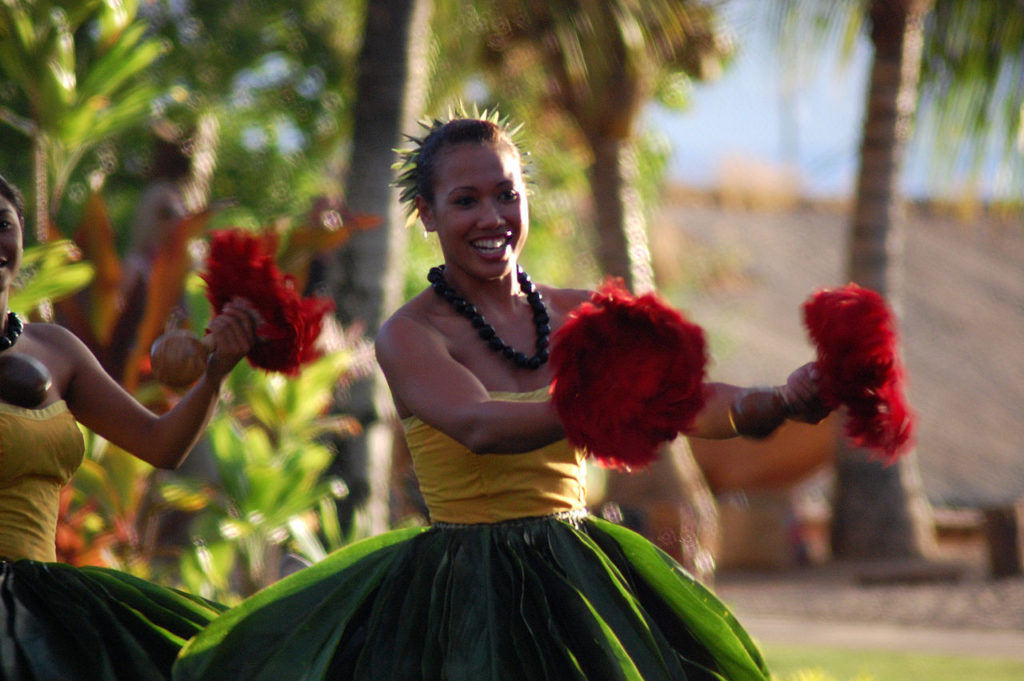Local Luau Hosted by the Warriors Youth Group

By JC Newman
Terms compliments of: HawaiianWords.com, Ulukau
The Polynesian lifestyle is what many dream of when letting go of their pilikia. But if you have the pōmaika`i to live in or near Sonoma County you may have attended the Rohnert Park Warriors Pacific Islanders Festival and set aside your troubles a little nearer to home. For the past eight years the Warriors luau has celebrated Polynesian food, dance and art in true island tradition. The festival is a fundraiser for the non-profit Warriors Youth Football and Cheering organization. Funds raised go towards insurance, park rentals, rental of Rancho Cotate field for home games, gear replacement and scholarships for families without funding.
“It’s amazing how many people have embraced the festival,” said Raquel Kilmarten, fundraising director for the annual event. “Its been a great contribution to community. One woman came from Quincy to see the [Rohnert Park] festival.”
Kilmarten is no haole to Pacific Islander traditions. Her husband is of Samoan ancestry and she had attended many such events before becoming involved with the Warriors festival. Her connection with the Pacific Island festival circuit simplified finding vendors who could put Rohnert Park’s festival into their schedules.
Pacific island festivals are popular family events in the region, no fewer than six including Rohnert Park, all who coordinate their event dates so as to not conflict with each other. Despite the number of this style festival, the Koas festival gets bigger every year. And it is manuahi for attendees, made possible because of the volunteer network in place and the vendors who pay a booth fee to sell food and drinks. This year’s mea hoʻohauʻoli included; the Junior Wellspring Church Santa Rosa who cooked and danced, Poti aka DJ Five O, O Hina’aro Nui, Faith Thompson Ako and Taimalietane Islands of Polynesia. Also at the festival were ‘ono authentic Polynesian food.
Yet the festival is more than a fundraiser, it is a networking venue for community members where community organizations can attend and provide information to the public.
“We give the opportunity for other organizations to share information about their programs for Asian Pacific students, as well as all students,” said Kilmarten, who started with the festival in 2010 as a field project for a degree in Public Administration at University of San Francisco.
“It was when the economy was getting bad and people were getting laid off,” she remembers. “[At that time] parents would receive tickets to sell but usually would buy them themselves.”
“We were trying to keep it free so anyone can enjoy it,” Kilmarten refers to Tracey Poueu-Guerrero, who has been the kahuna of the festival from its inception in 2007 until just this July. Together they had their own version of the epiphany: If you build it they will come. They decided, if people could volunteer instead buying, they will. And they were right. Parents have been volunteering every year and eight years later it remains a free event for community. And with pōmaika`i the festival will continue making ‘ohanas feel hau’ oli for years to come.
Haole- a foreigner; Hau’ oli- Happy, glad, joy; Hō‘ike- show, display; Kahuna- expert; Kaikaina – sister; Kālā- money; Koas- Warriors; Kōkua- help, assistance; Manuahi- free; Mea hoʻohauʻoli- entertainment; ‘Ohana- family; ‘Ono- delicious; Pilikia- troubles; Pōmaika`i- good fortune.

